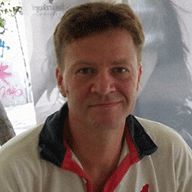Yesterday, I recounted my epic journey from Butrint to Greece. But I start with the journey of Aeneas in Virgil’s The Aenid. The great man approaches Butrint ( the world heritage site I visited yesterday in Southern Albania) and says:
I saw before Me Troy in minature, A slender copy of our massive tower, A dry brooklet named Xanthus…and I pressed My body against a Scaean gate. Those with me Feasted their eyes on this, our kinsmen’s town. In spacious colonnades the King received them, And offering mid court their cups of wine They made libation, while on plates of gold A fest was brought before them.
Ahem, yes well up to a point. In fact up to no point, that is all cobblers. This place had nothing to do with Troy. It would have had no towers, at that point no colonnades and about as many plates of gold as there were left in the Bank of England after Gordon Brown has been in charge for six months. There is a Scaean gate but this is simply a gate in the wall, given this name by a modern archaeologist after the gates of Troy – there is no suggestion that the gate here was in fact based on anything from Troy (and was almost certainly built well after the fall of Troy). But that is not to say that this was not an amazing place for many hundreds of years, in fact for two millennia.
It was founded several hundred years before Christ as a sort of health spa. The clean fresh waters from the lagoon that surrounds Butrint were meant to have medicinal properties as well as being a rich store of fish.

Certainly the water was clean then and still is. In the blazing heat I was tempted to strip off and dive in but the current looked strong and I am not sure that the few dozen folk there would have appreciated me stripping off. It is not that sort of place. But rather like Epidaurus in the Peloponnese it grew from a health spa (albeit one with spiritual associations) into something much larger. Thus alongside what were the sacred healing rooms we find an auditorium.

In this place, healing ceremonies took place, slaves were freed (manumission) as an offering to the Gods and later on plays were performed. I sat alone in this place undisturbed by a single person, attempting to imagine it in its pomp. That is something one finds hard to do in somewhere like Epidaurus, Delphi or Mycenae as hundreds of tourists gabble on about trivia in a multitude of tongues all around you. The blue dot in the middle is my rucksack listening intensely as I performed a line or two of Virgil in its honour. As it sat isolated in the theatre, for once, there was no-one around to complain about the strange smells emanating from within.
What is so amazing about Butrint is that the earliest walls that surround it are from c380 BC. Without using concrete the folks here created walls using large stones put together in a way with such precision that modern craftsmen would be proud.


At that time ( 350 years before Caesar) back in England we were swinging from trees or regarding a cave as a bit of a bijou palace. These people were terribly advanced.
By the time of Caesar Butrint was already a Roman outpost but the subject of repeated squabbles. But in the period about the birth of Christ, under Roman auspices there was a dramatic expansion of the place including the building of a bath house and a forum. The excavation of this site is far from complete but already we can see part of the forum, a mosaic floor which is as old as Jesus


The place got a new lease of life under Byzantine rule. There were at least nine churches build within the City. I wondered through the ruins of the best preserved relic, c 1500 years old:


Around this time with Butrint again under attack the walks were again strengthened. Thus we see the old wall at the Lion gate strengthened and the size of the entrance reduced by the insertion of the Lion motif. I am tall by modern Albanian standards but in 600 AD I would, at 6 foot, have been a giant. To get through this doorway with a rucksack on my back I had to drop to my knees.


The lion motif (it is a Lion eating a bull) probably came from another part of the site, almost certainly a temple. It rather reminds me one what is, I think, the earliest known surviving carving in stone of a lion, that which tops the Lion gate at Mycenae. Although this is a little bit more advanced.
The next critical rulers were the Venetians. The city itself had long gone into decline and this was essentially just a fortress outpost allowing whoever ruled Corfu a base on the mainland as well as control of the fish that were harvested from the lagoon. The Venetians took control in the 1300s and hung on for a surprisingly long time. They were not kicked out of Corfu until almost 1800 (by the French who then passed it on to Britain after the Napoleonic wars) but it was far harder to hold onto this mainland outcrop.
And so despite building stern looking structures such as an original fortress and later a Triangular fortress across the water from the main island, in the end Butrint fell to the Turks.



I apologise that I am not a great photographer. All I possess is a small camera I use for videos and the odd snap. But a bad workman…. I am no David Bailey. Walk around Butrint and you gain a sense of excitement and purpose stretching back 2000 years. I suppose some sites in Greece are more spectacular. But then the archaeology here is far from complete. Why knows what will turn up next?
And the fact that you can see buildings from 300 BC, 500 AD or 1500 AD all in one place has its own excitement. There is some feeling of the continuity of history. Seeing folks fishing out on the water not as a hobby but to catch food to eat and sell shows a continuity to the present day. I noted in Sarandra that eels from this place featured on many menus. Despite my links with the East End (by residence not birth) I loathe eel so I was not tempted. I also note that frog’s legs featured on a few menus and I suspect they come from this area too.
The real attraction is the peace of the place. Just 40 minutes and a 60 pence bus fare from Sarandra I spent most of my 2 hours trekking around the site in complete isolation with not a soul to bother me. It is not often you get a chance to reflect on such a spectacular place in such solitude.

